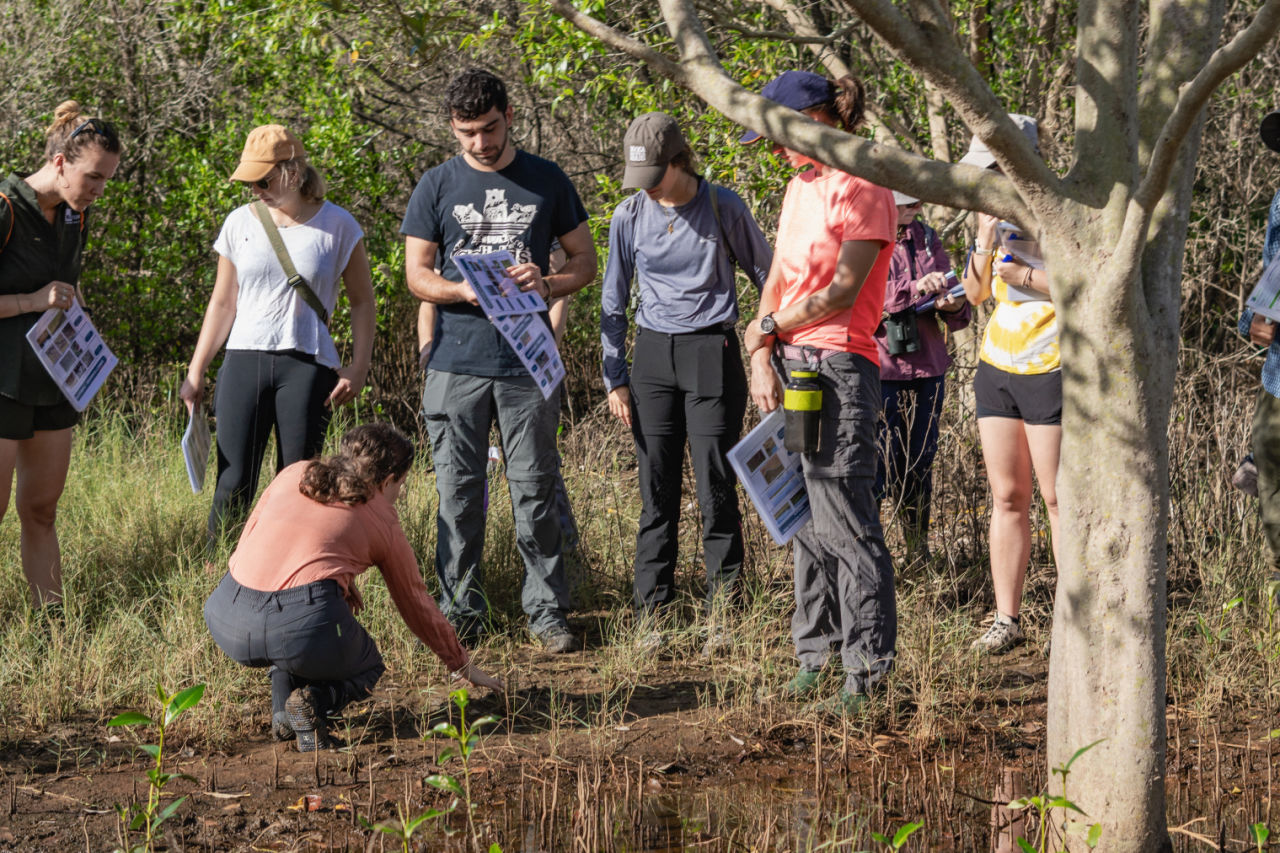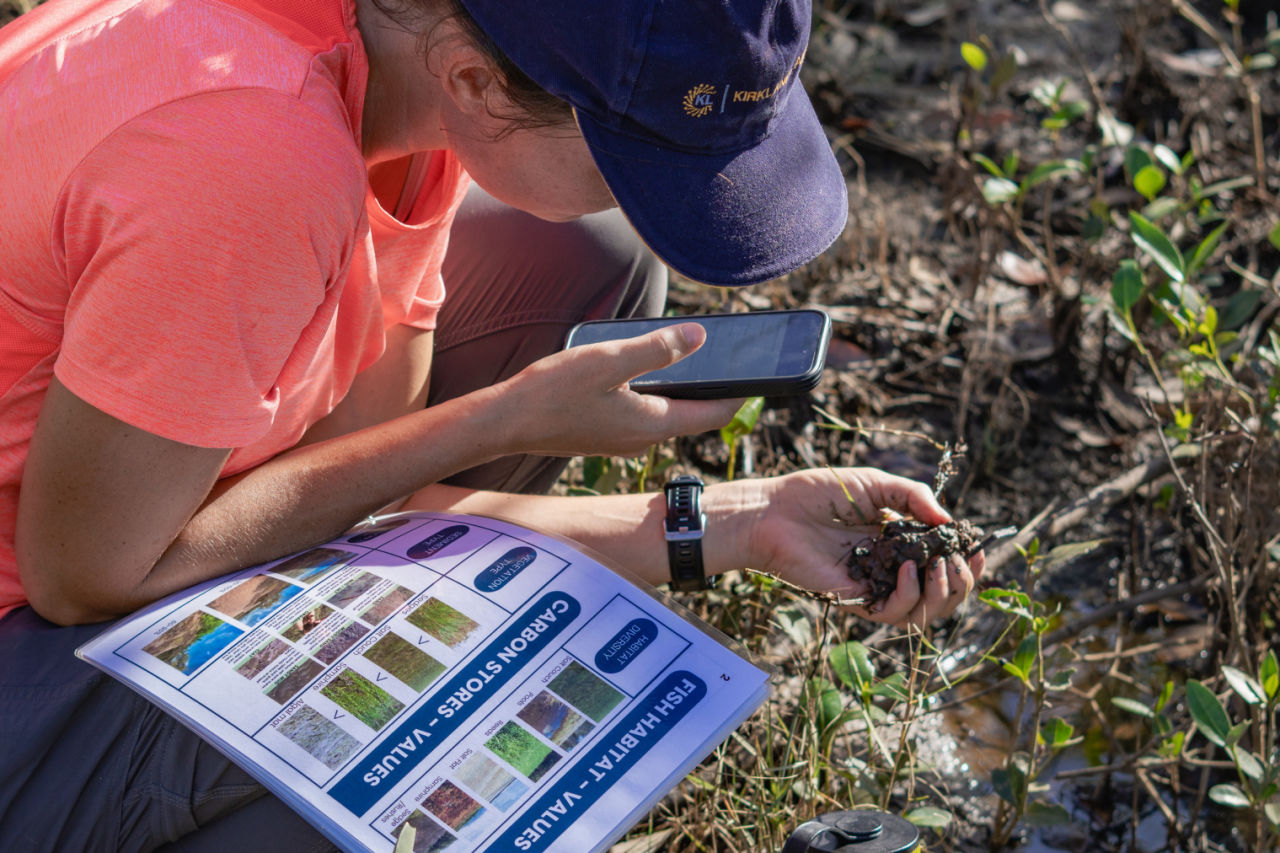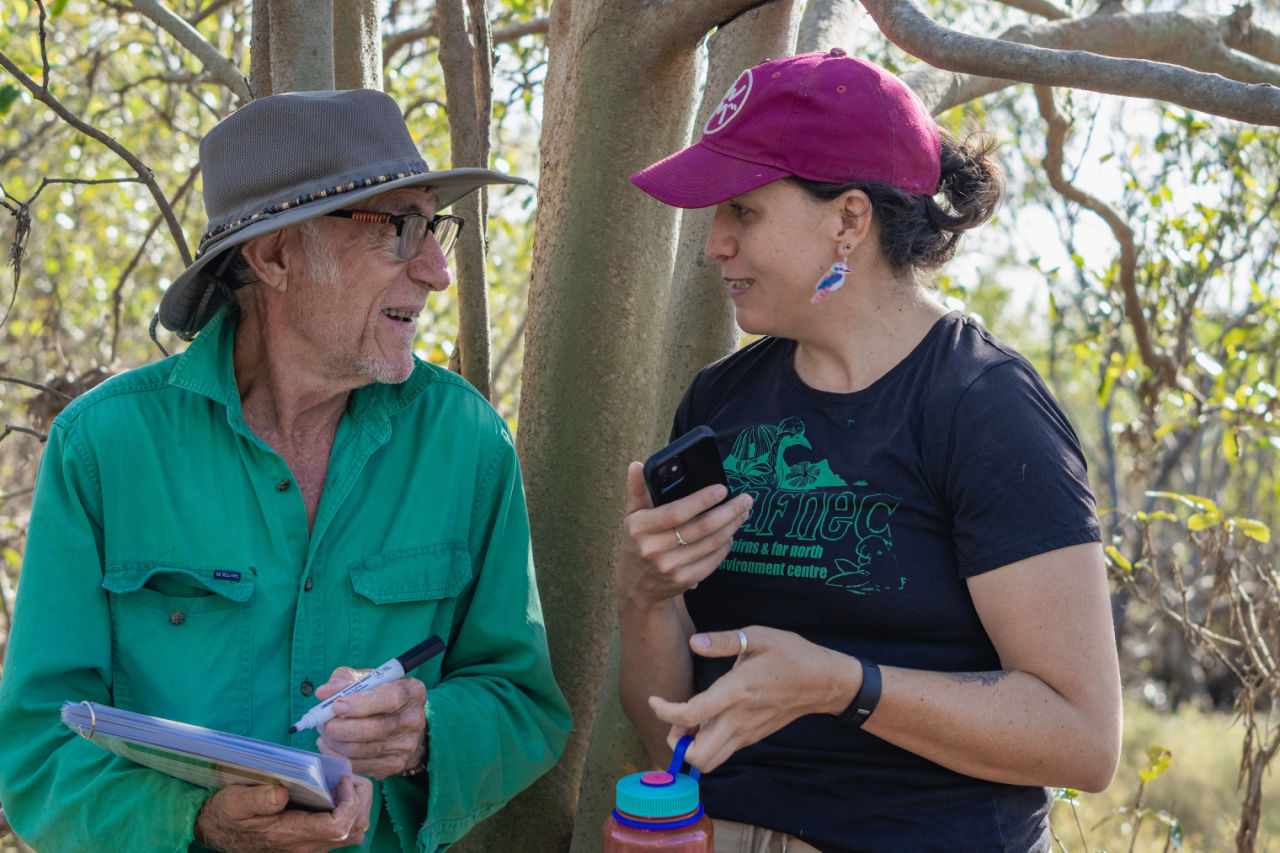Healthy mangroves and saltmarshes are vital to the health of the Great Barrier Reef. Their matrix of highly connected habitats help protect shorelines, creates homes and nurseries for marine wildlife, filters water coming from the catchment, provides places for local fishing and boating, and retains irreplaceable cultural values.
Mangroves and saltmarsh are important buffer zones and carbon storage powerhouses, making these coastal habitats especially critical in the face of climate change.
To help better understand tidal wetlands in the Wet Tropics region, Cairns and Far North Environment Centre (CAFNEC) and Earthwatch teamed up with local partners to build a network for tidal wetland monitoring and action through partnerships with Traditional Owners, community groups, education centres, and Wet Tropics Waterways.

CAFNEC's Shannon Bredeson sharing knowledge about mangroves with volunteers. Credit: Ben and Di
Community partners use MangroveWatch methods to collect standardised data on the extent and health of mangroves and tidal wetlands.
The data collected through this network was designed to fill a gap in reporting by the Wet Tropics Waterways, the partnership that produces the waterway health report card for the region. This was the first example of using citizen science mangrove data for report cards and helps set up a potential model for other locations.
James Donaldson, Executive Officer at Wet Tropics Waterways shared, "community groups like CAFNEC are absolutely invaluable to what we do. They provide citizen science data on the health of mangroves and saltmarsh in our region, and that then feeds into the bigger picture of waterway health in our region."

Volunteers use guides to help identify saltmarsh species. Credit: Ben and Di
Beyond contributing to formal environmental reporting for the region, the network is now progressing Local Action Plans, translating tidal wetland data into community-led action and on-ground works to care for these critical habitats.
As CAFNEC Project Officer Shannon Bredeson explained, "Our goal is to empower and upskill people to look after the local environment. My job is to train people in saltmarsh monitoring. You don't even need to have a degree in science or have done anything science-related before. The training we give is successful for people of all different backgrounds, academic levels, and knowledge."
Lucy Graham, CAFNEC's Director added, "it's not just a really important thing for the environment, but also for the community because it connects people, it brings people together, and it helps us all see that we have valuable insights to nature."

Volunteer Rob and CAFNEC Director Lucy Graham. Credit: Ben and Di
By taking part, they are able to spend time in nature learning new skills, gain a better understanding of how mangrove health matters to Reef health and how to care for their waterways along the way.
As long-time volunteer Mandy explains, "I find it inspirational to come and spend time with other people who have similar interests and also want to do something and get involved."
By harnessing the power of collective action and citizen science, the teams are able to educate and connect people while protecting nature.
As Lucy reflected, "there's not enough scientists in the world to be out in every bit of nature collecting data on it, but there are people in all types of environments who really care about what's around them who can do that. Citizen science makes this possible because we need lots of people with lots of different experience getting out in their local area and helping us keep an eye on what's happening and what the impacts are to mangroves and saltmarshes."
"If we always rely on experts to do it, we will never have the impact we need to, and so this program puts the power in the hands of people who live in those estuaries, who will always be there and who love that place," said Lucy.







